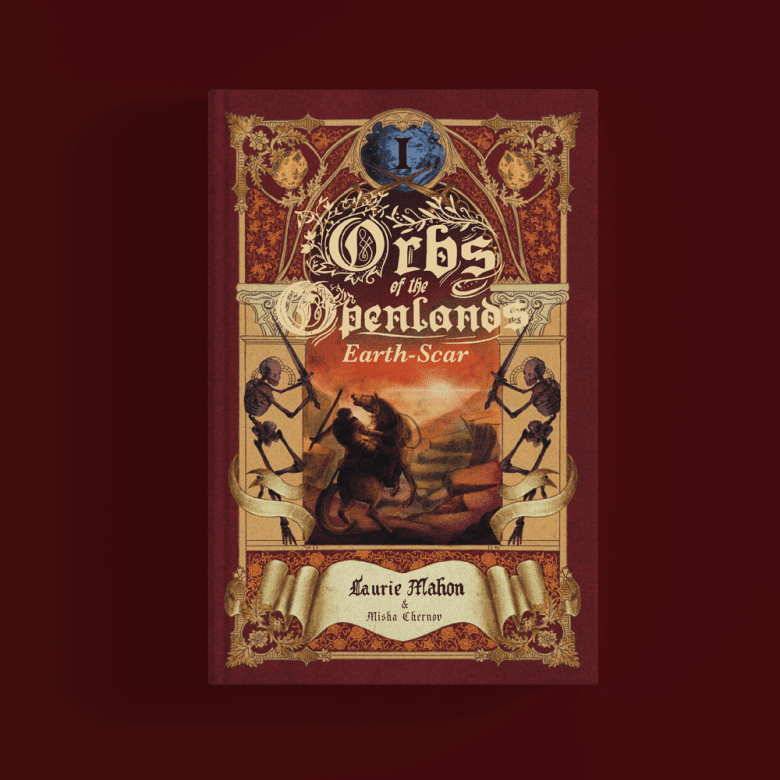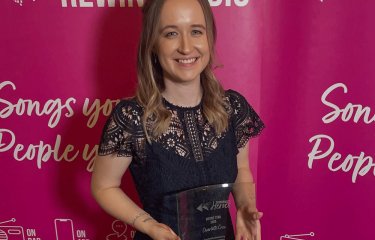Falmouth alumnus illustrates six book fantasy series
29 July 2025

Misha Chernov has illustrated the cover art, map design, and internal artwork for a six book fantasy series set to hit shelves from 10 September 2025. Drawing on a strong foundation in colour theory, creative development, and professional networking gained during his Illustration BA(Hons), Misha has applied these skills to create visuals that captivate readers and vividly bring the upcoming saga to life.
The series, entitled Orbs of the Openlands, will be published by Badger Learning and follows the exciting story of characters who undergo deadly quests, explore ancient powers and navigate a world on the brink of ruin. An action-packed tale that is brimming with magic, the series is ideal for pre-teen readers and is currently available for pre-order.
We chatted with Misha to gain an insight into his approach for illustrating a fantasy book series, how he found studying at university and what it’s been like to work in the industry as a neurodivergent person.
How did you find your experience of studying at Falmouth University?
For me, attending Falmouth University was a truly lovely experience that not only enhanced my illustration abilities and comprehension of the industry but also helped me understand my personality and passions in greater depth.
Finding a place where I can express myself, create work and not feel judged or ashamed was vital to me as a neurodivergent and queer person, and that’s what I enjoyed most about Falmouth University and my course. The respect and encouragement I received allowed me to develop as an individual and as a creative person, which I am incredibly thankful for.
What skills learnt at Falmouth do you use in your daily illustrative practise?
I’ve learned such a variety of skills, from composition and colour studies to the marketing and promotion of my work. That’s what I loved most about the Illustration course: you’re not taught how to do something in just one specific way. Instead, you always have a choice.
A large part of my working process is about analysing a project’s themes and concepts, so I still use many of the brainstorming methods we were taught on the course when I approach my work. During my time at Falmouth, I learned what approach would work best for the brief I was working on, and what approach works best for my brain to generate ideas. Writing essays helped me to generate ideas and enhanced my critical thinking skills, which is crucial for evolving and improving my work.
The printmaking studio at Falmouth also played a key role in shaping my illustration style. I’m currently working digitally in Procreate, but the way I approach my illustration, such as texture and materials or the way I use colour, comes from the techniques and skills I used to make lithography prints. I’m extremely grateful to the technicians who were patient and supportive enough to help me understand the whole lithographic process while I was a student at university.
Since graduating, you have now illustrated a series of books with Badger Learning, how did this opportunity come about?
As the saying goes, I was at the right place at the right time. Since graduating, I got into the habit of emailing art and creative directors every six months, constantly looking for new publishers and imprints, asking whether my work would fit their next project, and getting myself out there while connecting with new people in the industry.
It was when I emailed the art director of Badger Learning I got a reply in just several hours saying that they have a book series that would work perfectly with my style. After a couple of organisational moments, discussions around project details and signing the contract, we started working on the series.
What can you tell us about the process of illustrating the series?
Luckily, the process has been extremely pleasant and smooth! I never considered myself as a great team-worker because of my autism spectrum disorder (ASD) and I feared that it would be an obstacle in my career, but the more I work in industry, the more I realise that I was wrong. Instead, the work atmosphere was extremely friendly and supportive. The whole process of making the cover art was quite like the experience of creating a project at university, except that instead of lecturers I had an art director to support and guide me through the process.
I was given briefs for each book in the series which contained the art team’s vision on what the scenes from the book looked like. Each brief included details on how the scene might be illustrated and what the size and format needed to be. I was also given the author’s notes on character design in addition to a rough sketch of the world map.
It might seem like a strict guideline for some but there is a lot of back and forth of ideas and sketches and I always felt there was room for imagination. The art director was in constant communication with me, and most importantly, listened to me if I felt an alternative design would work better.




